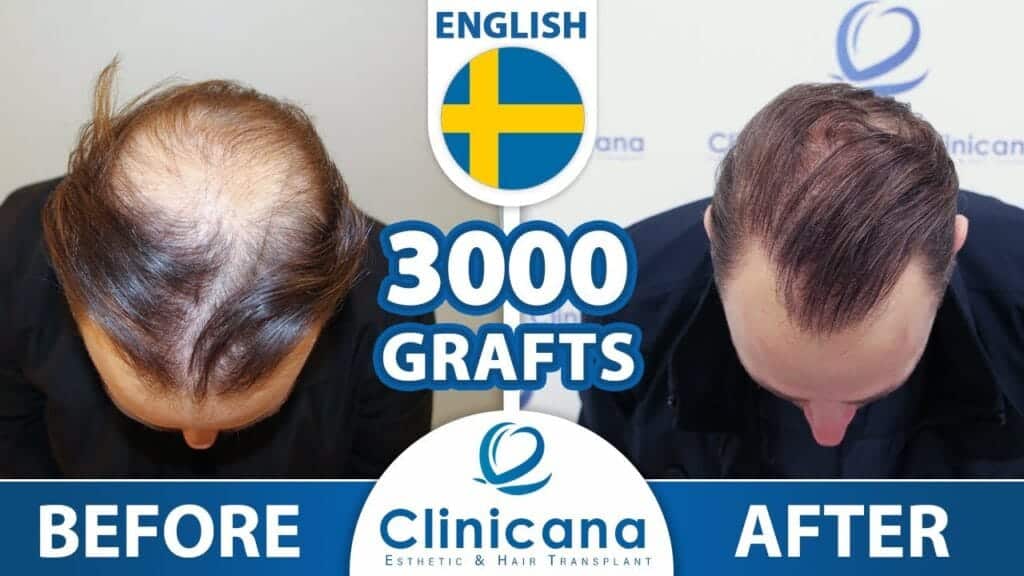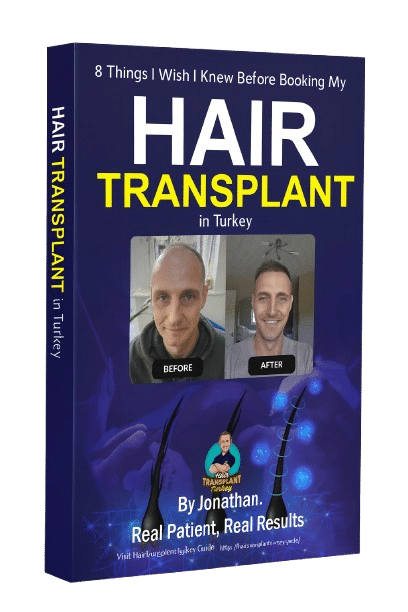When I first started looking into getting a hair transplant in Turkey, I’ll admit I was completely overwhelmed. There were hundreds of clinics, all promising perfect results at unbeatable prices. I wanted to make sure I chose the right place — somewhere safe, professional, and genuinely capable of giving me a natural-looking result. After a lot of research, I finally decided on Clinicana Hair Transplant & Esthetic Surgeries in Istanbul. Looking back now, I’m so glad I took the time to understand what to avoid — because there are plenty of traps people fall into when booking a transplant abroad.
This guide walks through the 10 most common mistakes people make when booking a hair transplant in Turkey — and how you can avoid them. Everything here is based on my own personal experience with Clinicana, combined with insights from trusted sources like the World Health Organization, Mayo Clinic, and the International Society of Hair Restoration Surgery (ISHRS).
If you’re considering it yourself, you can also get my free guide “8 Things I Wish I Knew Before Booking My Hair Transplant in Turkey” at https://hairtransplantturkey.guide/. It goes even deeper into what to expect and how to prepare.
1. Choosing A Clinic Based Only On Price
It’s easy to be tempted by low prices — I certainly was at first. Some clinics advertise full hair transplants for as little as €900, but when you look closer, these often involve unqualified technicians operating in unregulated settings. According to the World Health Organization, international patients should only use licensed medical providers that meet proper health and safety standards.
Clinicana stood out to me because it operates inside Acıbadem Taksim Hospital, a modern, fully regulated medical facility. They’re licensed by the Turkish Ministry of Health and certified under ISO 9001. Yes, it cost a bit more (€2,850 for my standard FUE package), but I knew I was in safe hands — and that peace of mind is worth far more than a small saving.
When researching, don’t just ask “How much does it cost?” — ask “What am I actually getting for my money?” This question alone will help you filter out unsafe options.
2. Not Checking the Surgeon’s Credentials
Many clinics use glossy marketing that features a famous doctor’s photo — but that doctor might never touch your scalp. The ISHRS warns that this practice, known as “black market hair transplantation,” is alarmingly common.
At Clinicana, I was introduced to Dr. Soner Tatlıdede, the chief plastic surgeon who oversaw my entire procedure. He designed my hairline himself, explained the graft placement strategy, and was present throughout surgery. That direct involvement gave me full confidence that my procedure was being handled by an expert, not a technician.
Before booking anywhere, insist on knowing who your surgeon is and whether they’ll be physically involved in your procedure. If they can’t answer that clearly, move on.
3. Ignoring Reviews And Patient Experiences
I read dozens of reviews before choosing Clinicana — and I didn’t stop there. I reached out to former patients, watched video testimonials, and even searched for independent YouTube reviews. What I found was consistent: professional staff, clean facilities, and results that actually looked natural.
Fake reviews are common in the hair transplant industry. Be wary of identical wording, AI-style repetition, or before-and-after photos that don’t show consistent lighting or timelines. A good clinic, like Clinicana, will have thousands of verified reviews and real results you can trace back to genuine patients.
In fact, I share my full unfiltered journey in my Members Area, where you can see my day-by-day experience, healing progress, and video diary from Istanbul. Transparency matters — and it’s one of the best indicators of a trustworthy clinic.

4. Not Understanding The Difference Between FUE And DHI
Before my transplant, I had no idea what FUE or DHI even meant. Yet, understanding these techniques is crucial to making an informed decision.
According to the Mayo Clinic, FUE (Follicular Unit Extraction) involves removing individual follicular units from the donor area and implanting them into the recipient zone. DHI (Direct Hair Implantation) uses a special implanter pen that places grafts directly, sometimes offering more density but at a higher price.
Clinicana offered both, but after consultation, they advised FUE for my case because I needed coverage across a large area. The result was natural and even, and the recovery was smooth.
If a clinic doesn’t explain why they recommend one method over the other, that’s a red flag.
5. Not Knowing What’s Included In The Package
Hair transplant packages in Turkey vary wildly. Some include everything — hotel, airport transfers, aftercare, medication — while others include only the surgery.
Clinicana’s standard package was genuinely all-inclusive. It covered:
- Three nights in the Naz City Hotel Taksim (a 4-star hotel just 200m from the clinic)
- All airport and clinic transfers
- Aftercare products and post-op washing
- Translation and patient coordination in English
There were no surprise costs — something that unfortunately isn’t true everywhere. Always ask for a written breakdown of what’s included and double-check that hotel and transfers are specified in your booking confirmation.
6. Failing To Ask Enough Questions Before Booking
One of the biggest mistakes is assuming all clinics operate the same way. They don’t. The best thing you can do before paying a deposit is to ask clear, specific questions.
Here are the essential ones I recommend asking:
- Who will perform the surgery, and what are their qualifications?
- How many grafts will I need, and how is that determined?
- What technique do you recommend — FUE or DHI — and why?
- What does your aftercare include?
- Can I speak to a past patient or see verified before/after results?
I did my entire pre-op consultation through WhatsApp, which made communication easy. Clinicana’s coordinators answered everything promptly and clearly — a great sign of professionalism.
Asking questions builds confidence, but it also exposes clinics that are evasive or disorganized.
7. Overlooking Hygiene and Safety Standards
This is one area where cutting corners can be dangerous. The British Association of Dermatologists warns that poor hygiene during or after hair transplant surgery can cause infection, folliculitis, or even permanent graft loss.
I felt reassured knowing Clinicana operates inside a real hospital, not a rented office. The surgical rooms were sterilized, the team wore full medical gear, and all instruments were sealed and opened in front of me.
Aftercare hygiene matters just as much — proper washing, gentle drying, and avoiding sun exposure are vital during the first week. If a clinic doesn’t provide clear hygiene guidance, they’re not taking your health seriously.

8. Expecting Instant Results
One of the most common misconceptions is that new hair grows right away. It doesn’t. According to a PubMed study, around 10–80% of transplanted hair begins to grow after 3–4 months, with full results visible after 12 months.
In my case, I saw tiny sprouts at three months, thicker patches by month four, and by month seven, a completely natural hairline. The Mayo Clinic also notes that early shedding (known as “shock loss”) is normal and temporary.
Trust the process. Patience is the hidden cost of a good transplant.
9. Neglecting Aftercare Instructions
Even the best surgery can fail if aftercare is ignored. Proper washing, medication use, and scalp protection are essential for graft survival.
Clinicana provided me with a step-by-step washing demonstration the day after surgery, plus products for two weeks. They also kept in touch through WhatsApp to check my progress. Within 10 days, my scabs had cleared, and by the third week, my scalp felt completely normal.
The British Association of Dermatologists emphasizes that consistent aftercare significantly improves healing outcomes and reduces infection risks. Follow instructions exactly as given — this is the easiest mistake to avoid.

10. Not Planning Your Travel and Recovery Properly
Many people make the mistake of treating a hair transplant trip like a quick holiday. While Istanbul is an incredible city, it’s not the time for long walks or sightseeing immediately after your procedure.
I stayed at the Naz City Hotel Taksim, which Clinicana includes in their package. It was quiet, comfortable, and just a two-minute shuttle ride from the clinic. That proximity made follow-up appointments easy and stress-free.
I’d recommend arriving a day early to rest, and staying at least two nights after surgery before flying home. This gives your scalp time to settle and ensures you’re available for post-op cleaning and care.
Bonus Tip: Don’t Rush the Decision
The best decision I made was taking my time to research thoroughly. I compared clinics, read reviews, checked credentials, and spoke to patients. The extra effort saved me from costly mistakes — and ultimately gave me results I’m proud to share.
If you’re at the start of your journey, I’ve created a free resource that expands on these lessons. Download “8 Things I Wish I Knew Before Booking My Hair Transplant in Turkey” here: https://hairtransplantturkey.guide/.
Final Thoughts
A successful hair transplant isn’t about luck — it’s about preparation. Avoiding these ten mistakes will not only save you money but also ensure you get the natural, long-lasting results you’re hoping for.
Turkey remains one of the world’s leading destinations for hair transplants, but only if you choose wisely. Take your time, verify everything, and never compromise on safety or medical standards. I did — and it’s the reason I can now confidently share my story and help others do the same.



 Continue with Google
Continue with Google